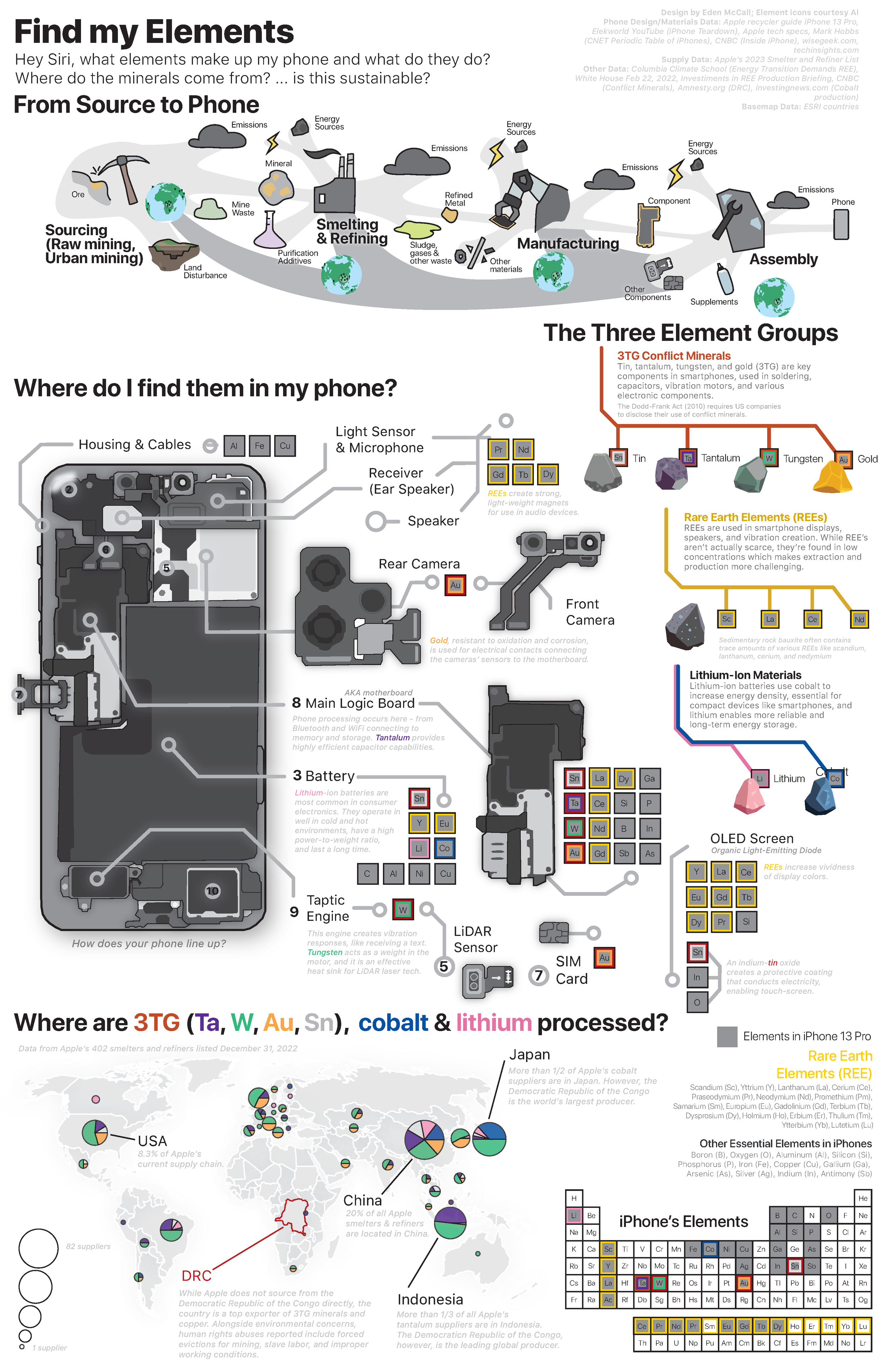
Mapping our Phones from Mineral to Device
March 2024
One evening, searching the Internet on my phone, I found myself pausing to contemplate the amazing technology in my hand. How does this little device, weighing less than a large McDonald’s fry, search the web, make phone calls and even help us navigate the world?
With this question in mind, I began researching what components are inside our phones. By following Teardown YouTube videos and Apple Recyler Guides, I digitized the iPhone 13 pro (my phone) as a model to “geolocate” where these components are located behind the screen. After mapping and learning about the role of each phone part, the question of what enables, for example, the OLED screen’s brilliant blue display and the LiDAR sensor’s facial recognition capability, naturally arose. Investigating what elements are inside these components, I began to visualize the phone as an increasingly full periodic table. Then, I tracked where important elements are sourced from as minerals to link our little everyday devices to the global supply chain. A snapshot of this research and design process is shown below.
What’s the purpose of such a graphic, though? As I researched, I learned the demand for these elements is rapidly increasing as our world shifts toward an electric future. However, sourcing, refining, manufacturing and assembling electronics has broader implications - environmental concerns, socio-political balancing, and human rights concerns. These issues are all prompted, in a micro way, by exploring what’s inside our own phones. By pondering the device we use most, but may know little about, we start to consider what it takes to run our world and how we might more ethically acquire and utilize these rare elements that come from across the globe.











